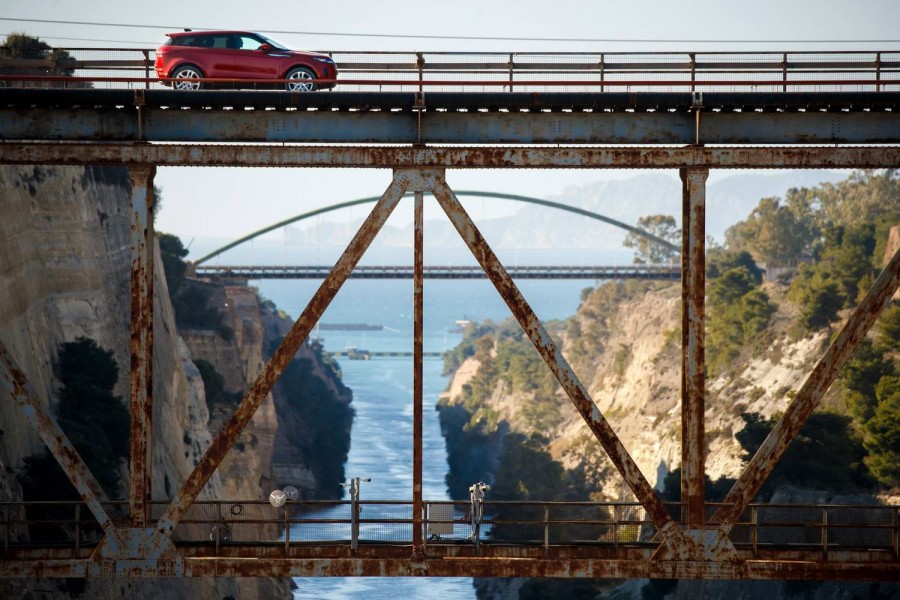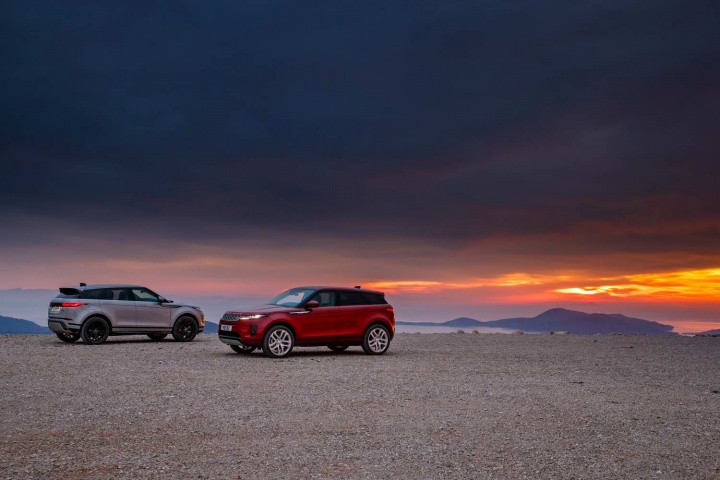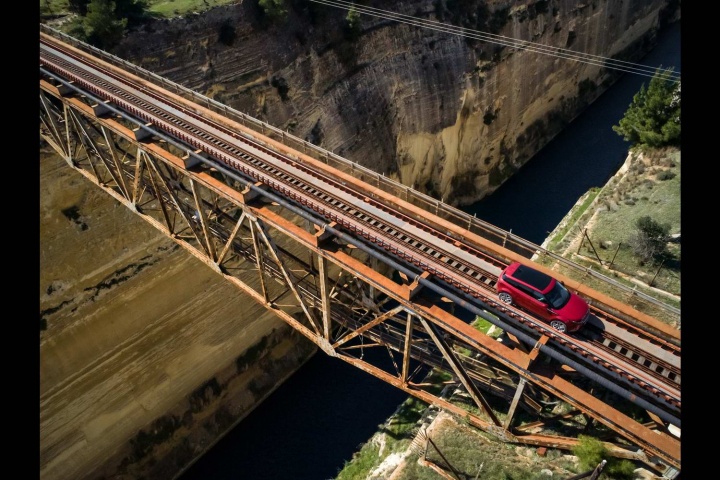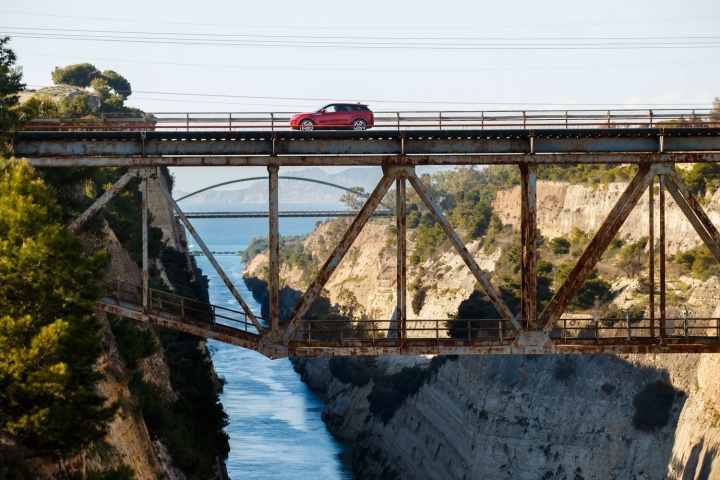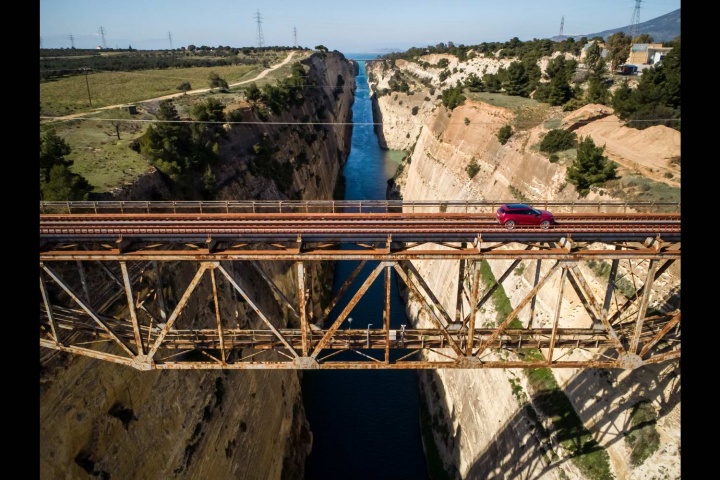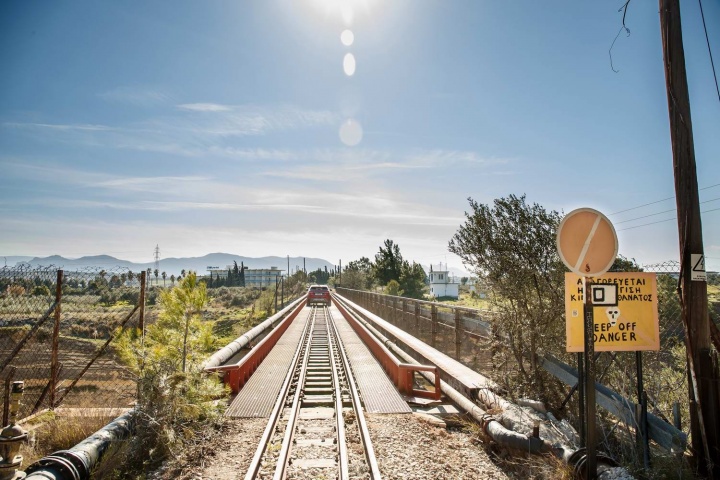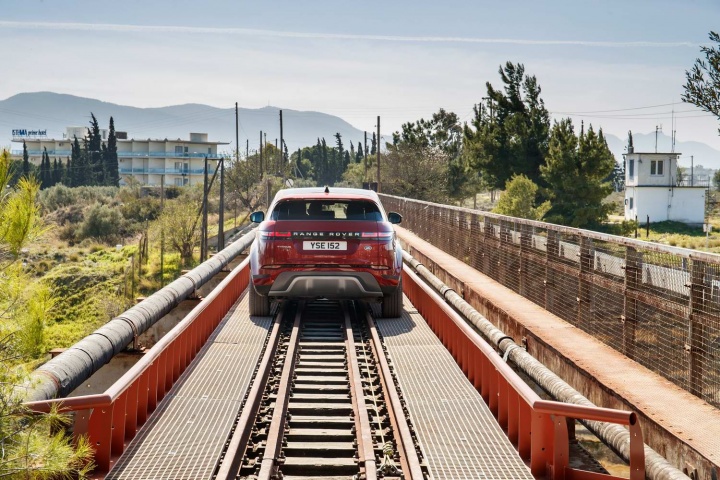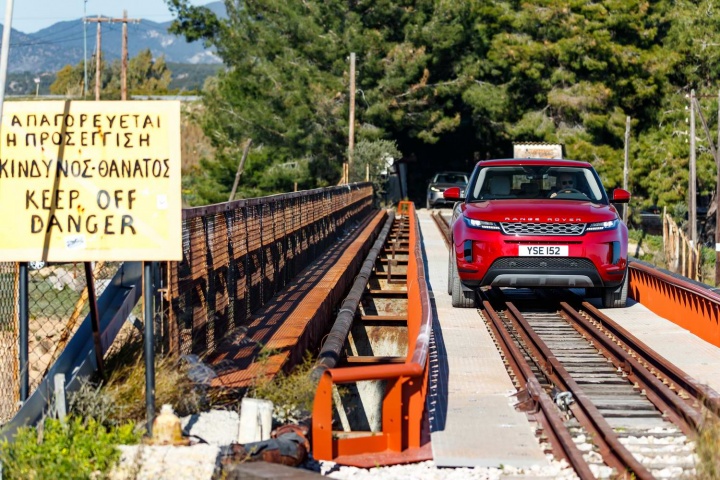It isn't every other day that Land Rover launches a new model, so when it does, the company likes to make it memorable. One of those tasked with ensuring that happens is a man called David Sneath. He holds the enviable position of overseeing the global PR side of Land Rover's Drive Experience. He and his team are the folks that scout the globe to find the best locations, most challenging terrain and stunning landscapes for us journalists to put the latest Land Rovers through their paces.
Greece was chosen as the launch location for the second-generation Range Rover Evoque, a hugely important model for the company and one that would also showcase the company's new ClearSight technology. Using advanced software and imagery from the front-facing camera, the new Evoque creates a way for the driver to effectively see through the engine bay and precisely what is going on under the car where the front wheels are. Sounds like sci-fi stuff, but it works especially well when driving into tight car parks with high kerbs that instantly increase blood pressure at the thought of damaging an alloy wheel. Equally, when off-roading, it adds an extra dimension to the surroundings and terrain that you're crossing.
In Greece, the driving routes were spectacular, but one of the real highlights was crossing the historic Corinth Canal, not by the usual roadway but over a single-track railway bridge. We sat down with David to see just what goes into planning something of that scale.
David and his team typically visit locations around eight to nine months ahead of the planned event. Usually they arrive with what is essentially a blank sheet of paper as he explains: "For Evoque, the route went from Athens Airport to the Amanzoe Hotel, which was already chosen, so I'm joining point A to point B up, and trying to come up with two days of driving to show off the breadth of capability of the car, so that's the off-road and the on-road, and we always like to put something that makes you think 'oh, I didn't think we'd ever do that'."
"So, whenever I'm looking around at road routes, I'm always looking at things and say 'I wonder if...' I like my signature to be a wow, so I've done things like driving through a Boeing 747 for the Range Rover Sport, and that's just the way my brain works." Sneath laughingly agrees with our summation that he is always in competition with himself to out-do his previous effort.
As he explains, it wasn't in the original plan to use the Corinth Canal as part of the drive. "When we were driving around initially, I stopped off at a cafe beside the Corinth Canal for lunch. I walked back to look at the canal because I'm interested in ships and boats. It's such a spectacle to see that sheer rock face that has been dug out. I was busy looking at the ships passing and the bungee jumping and I thought, 'look at that railway bridge, I wonder what's there', so I walked up along and saw this railway bridge that appeared to be disused and then ideas started forming in my head.
"We made contact with the local mayor to find out how we would gain permission and he very kindly put us in touch with the ministry of transport, who over weeks and months eventually said send us a concept as I don't really know what you're trying to do. In the end, we went to see the Minister for Transport and presented our idea. It was like going into a massive interview with about twelve people around this table, and we were presenting our idea to them. We obviously captured something in their imagination in that a) we had credibility, and they trusted us and b) they saw it as an opportunity for them as well.
"They gave us approval subject to the correct safety rules and regulations, and then we went ahead and designed a concept that suited our needs, but we also didn't want to lose the effect of driving over a sideless bridge.
"Across the sleepers, we put our GRP (Glass-reinforced plastic) roadway. These big sheets of GRP are used in industrial applications for walkways. We cut it up to the right size, and we created the tracks on top of the sleepers, as otherwise, you'd have been dropping through them. And then we put what is effectively an Armco [barrier] that bolted to the bridge so that it prevented the cars from driving off. Not that they'd have been able to because the rails were in the centre, but it gave reassurance and ticked all the boxes for safety. It also prevented people from getting out of the car while they were on it.
"If we did need to get anyone out of the car, we could still do so by detaching the barrier, as it was modular. So for example, if somebody had such a shock or panicked then we could easily and safely get them out of the car. Just as importantly, the structure didn't spoil any of the view when crossing, so you could still see a ship coming up the canal beneath you.
"As the bridge is not currently in use we asked if any remedial work was needed to the structure ahead of the event. Other than adding in the safety elements.
"The railway isn't used anymore but the reason it is so well maintained is that if anything was to drop off it, it could potentially drop onto a ship below. So it's kept in good enough condition for a railway engine to go across. The other reason they invest and look after it is that it goes into a military camp, and they never know when they may need to use it, so it is kept in a state of readiness.
"The railway station that is next to the bridge is disused and over the last two decades had fallen into quite a state of disrepair with people using it as dumping ground. We had to clear all of that up with the help of the mayor and that was the positive thing for him as we were, in a very polite way, effectively forcing him to clean it up. It's something he wanted to do but nobody would give the budget of the justification to do it, until now. So, as well as doing the event Land Rover has left a positive impact on the local area too."
With it being the brainwave of David, we asked if that meant that he had to be the first person to drive across it. "Yes, that's right, as far as driving across in a car for the first time that was myself and a colleague. It is built to be very strong, so there was no question of us going through. Once we had done that a few times we invited the Minister and all the people that had helped down on the Friday before we went live. Firstly, to show them as they were just so interested in it and to thank them for being so helpful, and also as a dry run for us to see what it's like to have a group go through.
It's no easy task to make something of this scale happen, nor do these things get done overnight, as David explains: "By the time we got approval we were in November. We then did a detailed survey to decide how to do it, and we had several iterations, looking at cost and strength. We then commissioned it to be built before having it shipped out in a container to Greece. That took about nine days to transport to the main port and then get it down to the location. We allowed a week for the build; however, in the end, it only took three days, and it went very well. It was about the same time after the event. When we finished, we take everything away, so it looks like we've never been there."
Having such a job is a dream to some people, but it does come with a high degree of responsibility and pressure. We asked David if he gets much freedom for creating these ideas, and if it's always to find the best driving roads or how much does location come into it too.
"They're all equally important depending on which aspect you're talking about. For the on-road attributes in terms of which type of surface we're looking for, we do a lot of searching. I'm just back from a drive that in eight days we drove 5,000 kilometres just to cover the ground and re-validate what we think we know, putting the jigsaw together. My homework as it were, has to be marked by a number of key players in the business to ensure I'm coming up with the right ideas, and while there is a high level of trust, it's good to have a second set of eyes look at it."
We asked David if he has a dream location that he'd love to get a vehicle to.
"The Moon! The biggest thing that I worry about these days is the environmental aspect of where we're going. Europe is becoming more and more controlled, and it's just not the authorities, it's a case of 'should you be driving there?' For example, if you go to Iceland, it's a phenomenal area and most of their tracks are not properly surfaced, so people think that's actually off-road, which ticks the box, but it's highly illegal to go off those sand tracks as you're driving through the volcanic region.
"Places like Argentina, and Africa, they have natural roads through the terrain that is just not paved, and the weather can affect in half an hour. On a road in Botswana, which is hard packed clay, it can turn into the worst quagmire you've ever imagined. Those are the type of things I like putting together because it gives relevance to what our cars can do, which is really important these days and it sort of educates people. You can't get in these fantastic cars and just willy-nilly go and drive them anywhere; you've got to be responsible."
So there you have it, an insight into some of what goes on behind the scenes of an international car launch and the level of planning and work that goes into it.
You can find out more about the Range Rover Evoque, and it's smart ClearSight technology in our review.

